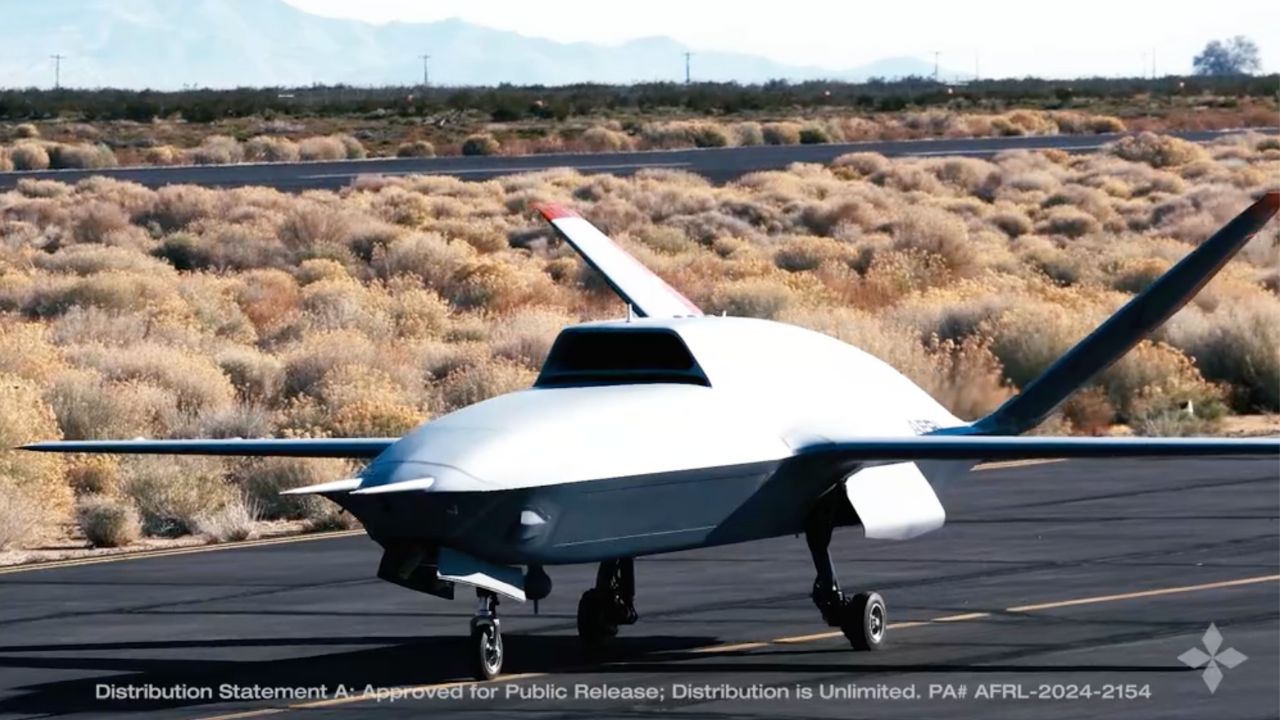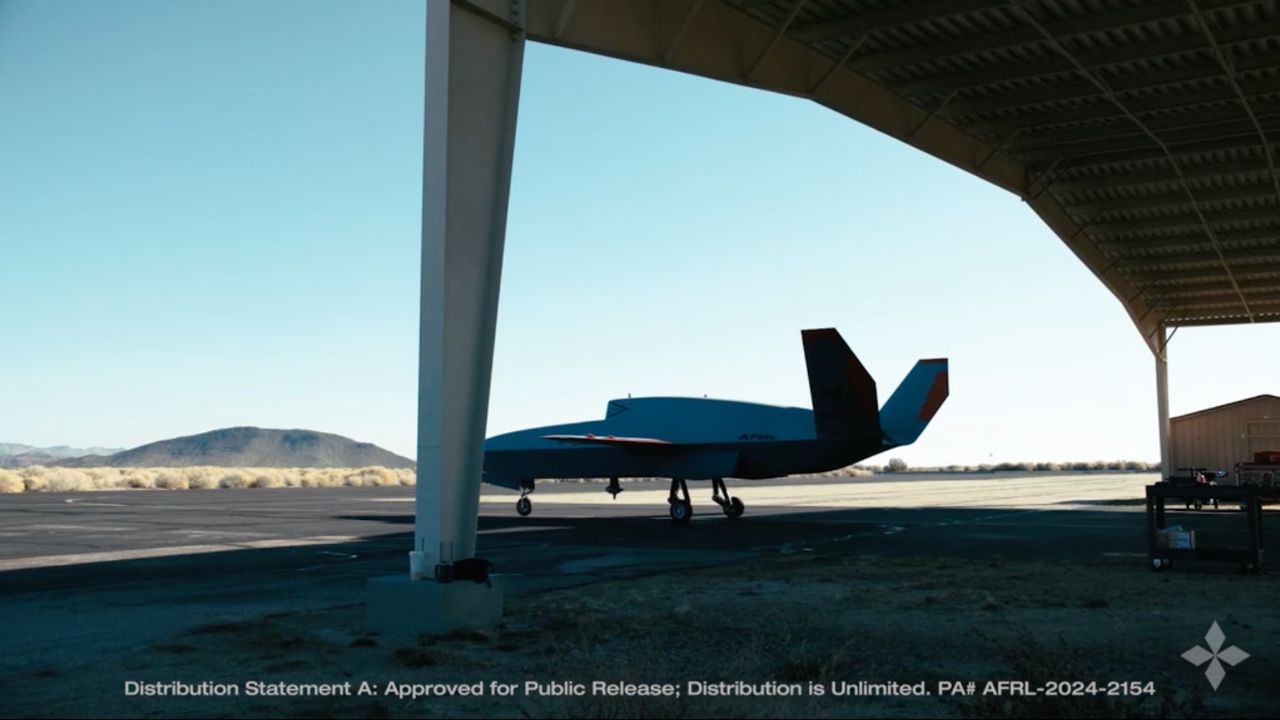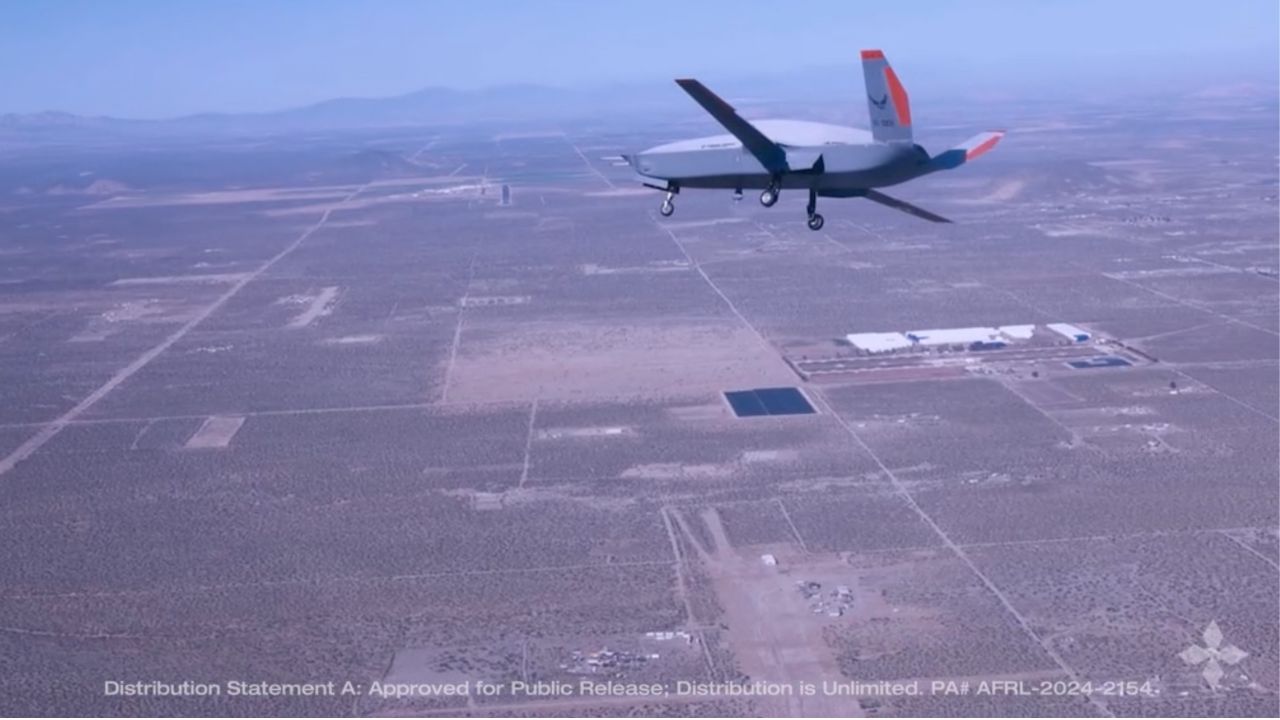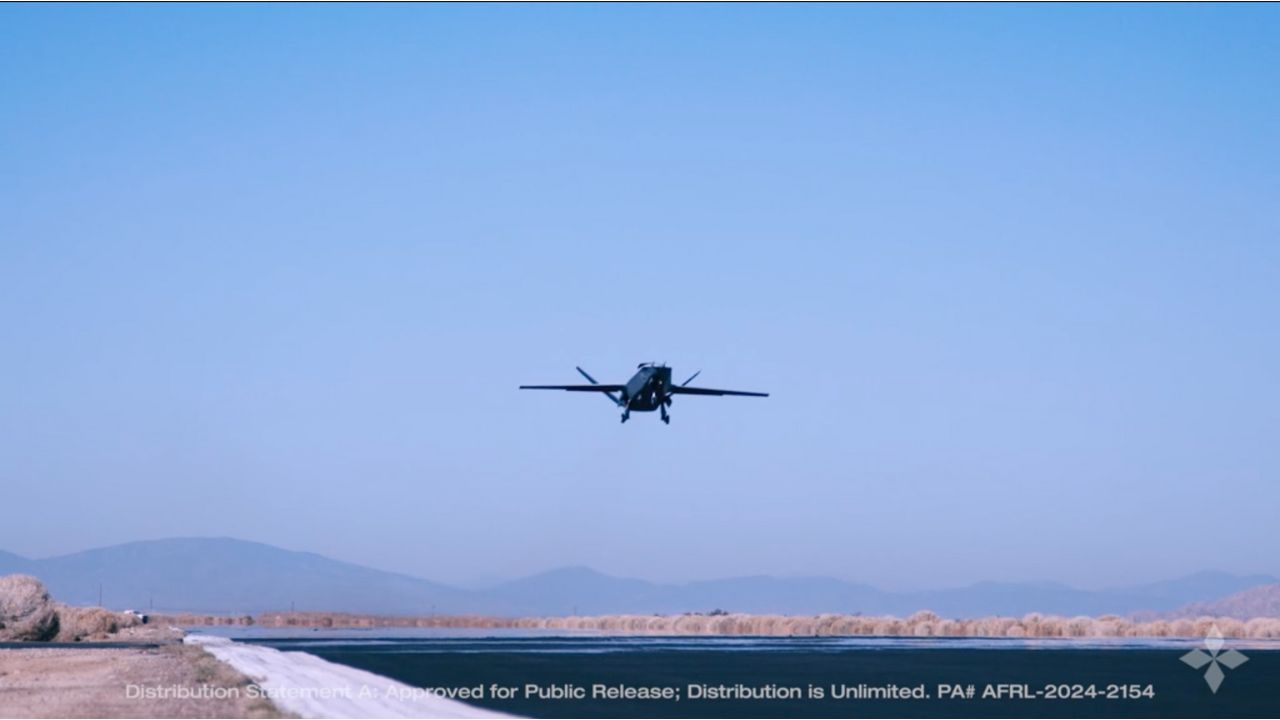Have you ever wondered what the future of warfare might look like? Well, it’s starting to take shape right above our heads. The US Air Force has just unveiled a new aircraft that’s turning heads and raising eyebrows across the globe. But don’t expect to see a pilot in the cockpit – this high-tech innovation flies itself.
GET SECURITY ALERTS, EXPERT TIPS – SIGN UP FOR KURT’S NEWSLETTER – THE CYBERGUY REPORT HERE

Credit: AFRL
XQ-67A: The new kid on the block
On a sunny California day in February 2024, something extraordinary took flight. The XQ-67A, a sleek, unmanned aircraft, soared into the sky for the first time, giving us a glimpse into the future of aerial combat and reconnaissance.
The XQ-67A is what’s known as a drone or unmanned aerial vehicle (UAV). This aircraft is packed with cutting-edge technology that allows it to fly without a human pilot on board. Instead, it can be controlled remotely or even fly on its own, making decisions based on its programming and the data it collects.

Credit: AFRL
A NEW BREED OF MILITARY AI ROBO-DOGS COULD BE THE MARINES’ NEW SECRET WEAPON
There’s more than meets the eye with the XQ-67A
So, what makes the XQ-67A stand out in a world where drones are becoming increasingly common? For starters, it’s part of a program called the Off-Board Sensing Station (OBSS). This fancy name essentially means it’s designed to be the eyes and ears of the Air Force, gathering crucial information in situations that might be too dangerous for human pilots.
But here’s where it gets really interesting: the XQ-67A is built on what engineers call a “common chassis.” Think of it like a car frame that can be used to build different types of vehicles. This approach allows the Air Force to create various types of drones quickly and cost-effectively. All of these are based on the same core design.

Credit: AFRL
COULD THESE CREEPY DEAD STUFFED BIRDS BE USED AS DRONES FOR THE MILITARY
It’s a family affair when it comes to the Air Force’s drones
The XQ-67A isn’t alone in this new era of aviation. It’s actually based on an earlier drone called the XQ-58A Valkyrie. And there’s more on the horizon. The Air Force is also developing something called the Off-Board Weapon Station (OBWS), which could be thought of as the XQ-67A’s more combat-oriented cousin.
This family of drones represents a shift in military thinking. Instead of relying solely on expensive, manned aircraft, the Air Force is moving towards a mix of crewed and uncrewed vehicles working together. It’s a concept they call “Loyal Wingman,” where these autonomous drones support and protect human pilots in the air.

Credit: AFRL
U.S. MILITARY JET FLOWN BY AI FOR 17 HOURS: SHOULD YOU BE WORRIED?
How the XQ-67A is changing the game
The implications of this technology are huge. With drones like the XQ-67A, the Air Force can gather intelligence, conduct surveillance, and potentially even engage in combat without putting pilots directly in harm’s way. It’s not just about reducing risk to human life; it’s about expanding capabilities.
These drones can fly longer missions without the limitations of human endurance. They can be sent into dangerous or contaminated areas without hesitation. And perhaps most importantly, they can make split-second decisions based on data and algorithms, potentially reacting faster than a human pilot could.

Credit: AFRL
Looking to the future of autonomous military aircraft
As exciting as the XQ-67A is, it’s just the beginning. The technology behind these autonomous aircraft is advancing rapidly, and it’s not hard to imagine a future where swarms of AI-controlled drones work in perfect coordination with human pilots.
But this future also raises important questions. How will the role of human pilots evolve? What are the ethical implications of having machines make life-and-death decisions in combat? And how might this technology change the nature of warfare itself?

Credit: AFRL
Kurt’s key takeaways
The XQ-67A represents a pivotal moment in military aviation. The skies of tomorrow will be filled with aircraft that think, decide, and act on their own, working alongside human pilots to accomplish missions we can only imagine today. Whether this prospect fills you with excitement or concern, one thing is certain: the future of aerial warfare is here, and it’s autonomous.
What are your thoughts on this new technology? Does the idea of autonomous military aircraft intrigue you, or does it give you pause? Let us know in the comments below.
TO GET MORE OF MY SECURITY ALERTS, SUBSCRIBE TO MY FREE CYBERGUY REPORT NEWSLETTER



3 comments
I think that while the advance of the technology is amazing, we should also bake in precautions for scenarios where the technology could be hacked by enemy agents. We also should take precautions that we do not create a sky-net situation where our technology could become advanced enough to become self-aware and turn on it’s creators even if that seems farfetched and unlikely of a possibility. It only takes a look at history to see multiple examples of things that were thought unlikely or impossible becoming reality. After all once the genie is out of the bottle it is usually to late to stop whatever negative outcomes engendered by the discoveries. Nuclear energy comes to mind as a good example of well meaning research leading to terrifying potential and real consequences.
Science Fiction writers in the 1940’s following technological advancements in military devices (computers, smart torpedoes, robots, etc.) during WWII were terrified about the risks to mankind if these smart weapons were damaged or ran out of battery power and later recovered and resumed fighting even though the war had been over for months or years and they had no way to know that. The XQ-67A and other robotic advances bring all of this back again. Autonomous weapons are great when they work properly and perform their assigned mission but it does not take much imagination to worry about BUGS – like the faulty update that recently took down most of the computers in the world. Bugs, lightning strikes, damage caused by defense systems, component failures, cosmic rays erasing or altering memories, … Great when they work right, a potential disaster when something goes wrong – and equipped with the most advanced weapons. Welcome to the 21st century.
Enter the giveaway by signing up for my free newsletter.
The Virtual Genie has already escaped the bottle and has been on the loose since the’60s and continues to this most modern of eras.
we’ve become overly reliant on automation and the instant answers provided by the numerous then brilliant minds
Skynet may already exist, but has yet to reveal it’s artic presence.